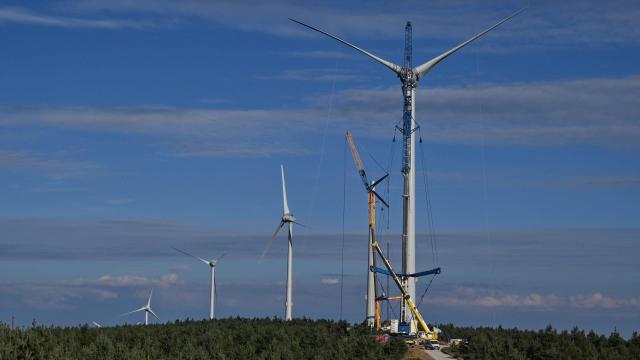This year, covid-19 lockdowns prompted a precipitous crash in fuel demand which tanked the the fossil fuel market. Oil companies have said it’s quite possibly never going to recover. But it’s a different story for renewable energy industry, which is thriving.
Global renewable power capacity will increase by 200 gigawatts, or 7%, by the end of 2020, marking a new record for annual growth in the sector, according to a report from the International Energy Agency. This feat came even as global energy demand declined a historic 5%. Renewable growth was chiefly driven by China and the U.S., both of which saw a 30% increase in wind and solar because developers are rushing to complete projects before financial incentives expire at the year’s end.
Almost 90% of new electricity installed this year will be renewable, with the remainder coming from fossil fuels. Next year, the sector is expected to see even more growth, as India, the U.S., and the European Union bring new projects on board, including many that had previously been delayed.
[referenced id=”1528070″ url=”https://gizmodo.com.au/2020/11/how-to-tell-if-joe-biden-is-hiring-the-right-people-to-address-the-climate-crisis/” thumb=”https://gizmodo.com.au/wp-content/uploads/2020/11/11/swtytoofvxdmjhfideom-300×169.jpg” title=”How to Tell if Joe Biden Is Hiring the Right People to Address the Climate Crisis” excerpt=”U.S. President-elect Joe Biden will enter the White House with plans to decarbonise the grid by 2035, reach net-zero greenhouse gas emissions by 2050, invest in communities dealing with environmental degradation, and create millions of jobs. But whether he follows through with these campaign promises could depend on who he…”]
If this growth continues as the agency expects, the world will see 1,123 more gigawatts of wind and solar capacity installed by 2024. The report goes on to predict that renewables, including wind, solar, hydrothermal, and bioenergy, will account for 95% of the energy capacity the world adds through 2025. By 2023, these renewable sources combined are expected to generate more energy than natural gas, and by 2024, they’re expected to overtake coal. That means by the middle of the decade, renewables will become the world’s largest source of energy — a spot which coal has occupied for half a century — supplying one-third of the world’s electricity.
The report shows that the transition away from fossil fuels isn’t just necessary, it’s already happening. But that’s not to say that we should simply sit back and watch the market do its work. By banning dirty energy sources and funding renewable expansion as part of a green recovery from the economic crash, we can make the switch even faster, which could save carbon emissions and lives. Fossil fuel companies have also laid off thousands of workers and to abandoned polluting infrastructure in response to the crash. Policies are need to prevent and mitigate these harms. Research also shows that residents of poorer countries will suffer worse impacts from the phase-out of dirty energy unless leaders explicitly take steps to promote equity.
